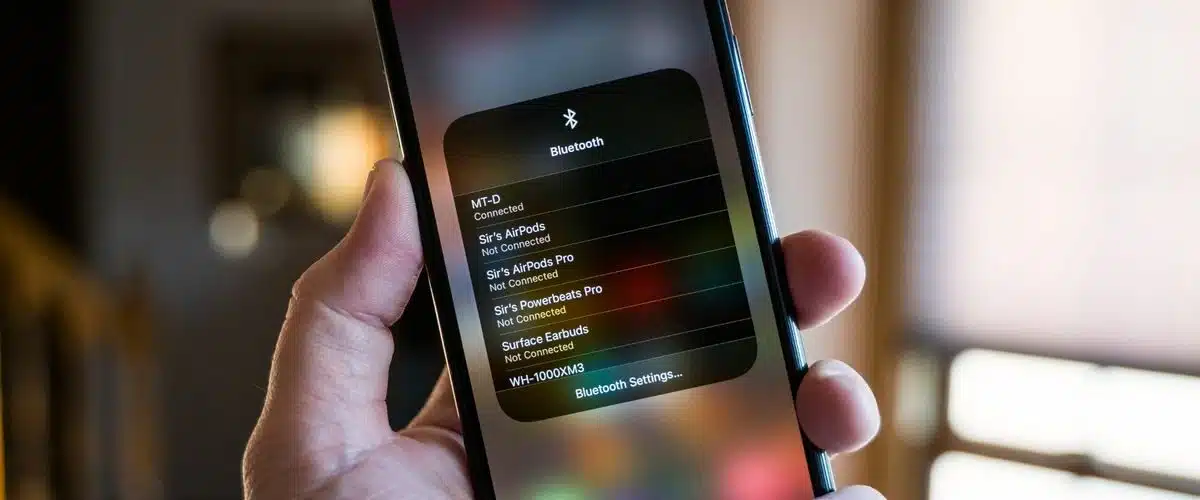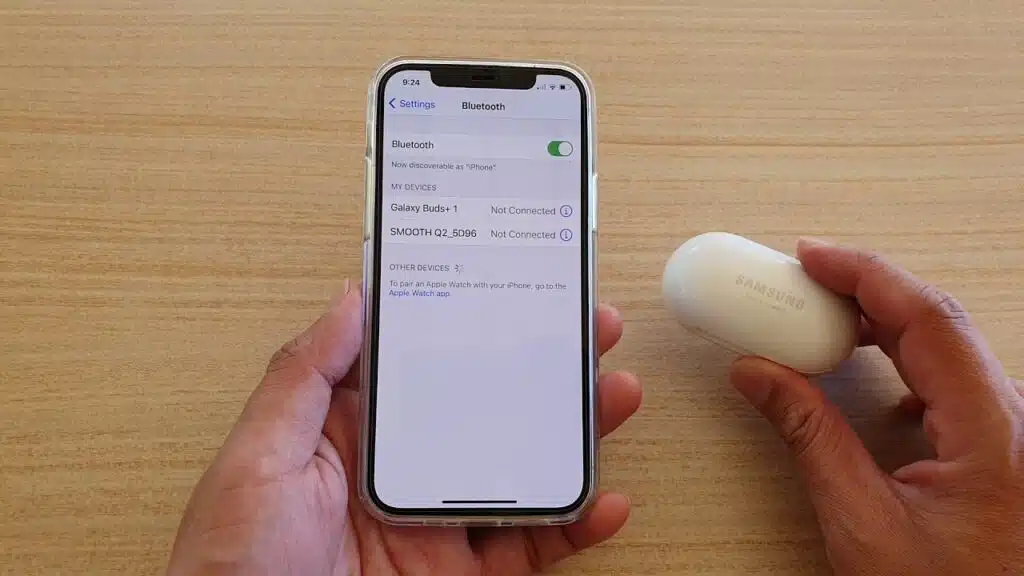Table of Contents
How to Connect Bluetooth Settings on Your iPhone?
How To Connect Bluetooth Settings iPhone? Bluetooth is a wireless technology that allows the iPhone to connect to accessories such as earphones, speakers, keyboards, and car kits. But connecting to Bluetooth can be frustrating when the iPhone doesn’t recognize or pair with a device.
Luckily, there are a few quick fixes for Bluetooth issues. Start by making sure your iPhone is updated to the latest version of iOS.
1. Turn Bluetooth On:
When you need to use a Bluetooth accessory. You can turn on the iPhone Bluetooth settings to allow it to be detected. The iPhone can also automatically search for Bluetooth gadgets that are within range. And show them in the list of devices that it’s connected to. If the device isn’t listed, you can connect it by tapping it. It’s important to keep Bluetooth turned off when not in use so it doesn’t drain the battery.
If you aren’t able to pair the Bluetooth device. There may be a problem with the device or it may be out of range. To fix this, try restarting the device and then re-entering the pairing process. If this doesn’t work, make sure the device is updated to the latest version of iOS. Some functions, including Bluetooth, won’t work unless the iPhone is up to date.
You can also open the Control Center on your iPhone to access the Bluetooth settings. To do this, swipe up from the bottom on older iPhone models. Or down from the top of the screen on iPhone X and later. You can find the Bluetooth icon inside the Control Center, and tapping it turns it blue and enables the feature.
You can disconnect Bluetooth from the iPhone when you are finished using it. This can prevent your Bluetooth device from running down the battery, and it can also help to preserve your iPhone’s battery life. To do this, open the Bluetooth menu in the Settings app and tap the switch to change it from On to Off. You can also disconnect a Bluetooth device from the iPhone by opening the Settings app, finding the device, and tapping on the i button next to it. This will open a menu with the option to “Forget This Device.”
2. Turn Bluetooth Off:
Bluetooth is great for connecting devices like headphones and speakers, but it can also drain your phone’s battery if it’s left on. To prevent this, it’s a good idea to turn off Bluetooth when you’re done using it. You can do this in the Control Center or Settings.
To turn off Bluetooth, swipe up on the Control Center and tap the Bluetooth icon. You’ll then be prompted to either disable Bluetooth or enable it again. This will disable your iPhone’s radios so that no other devices can connect to it. You can also do this in the Settings app by going to Privacy and selecting Bluetooth.
Then, you can set the toggle switch to Off and tap Forget Device. This will remove the device from your iPhone’s list of Bluetooth devices and prevent it from turning back on automatically. You can always reconnect the device later if you need to.
In addition, you should turn off Bluetooth when you’re not using it to avoid the potential risk of hackers exploiting the feature. This could lead to the theft of your personal information and other sensitive data.
If you’re not sure whether your Bluetooth is turned off or on, it’s worth trying a simple reset. This is easy to do on any iPhone model and only takes a few seconds.
If you’re still having trouble with your Bluetooth, try updating the iOS software on your iPhone. This can fix problems that you might not even be aware of. You can check for updates in Settings General Software Update.
3. Go to Settings:
We’ve all been there; you want to change a setting on your iPhone, iPad or iPod touch but can’t remember where that preference or option is located in the Settings app. Luckily, iOS has a search feature that allows you to quickly find the location of any settings option or toggle. And with iOS 13, there’s a new shortcut that makes this process even easier.
When you swipe down from the middle of the Home or Lock screen, you’ll now see a search field instead of the app icons. Simply insert “settings” into the search field, and iOS will bring up a list of your installed settings apps. From here, you can select the one you want to open. And if you don’t have the Settings app on your Home or Today view screens, it’s also easy to add it.
From the Settings app, you can easily find and connect to Bluetooth devices. Make sure the switch next to Bluetooth is green, and then a list of all Bluetooth devices currently paired will appear. Simply tap the device you want to connect to, and iOS will automatically connect to it.
And if you’re no longer going to use a certain Bluetooth device, you can also remove it from the list. To do so, tap the information button next to the device, and then choose Forget Device.
Using the above steps should help you solve any Bluetooth issues you’re having. But if you have additional troubleshooting tips, feel free to share them in the comments below. Ryan Ariano grew up in Baltimore when the Macintosh was cutting edge, lived in Los Angeles as Blackberries gave way to iPhones, and now lives in Jackson Hole where he continues to nerd out across the tech spectrum. He writes on everything from Apple hardware to the latest apps for iPhone and Android.
4. Select Bluetooth:
The Bluetooth feature on an iPhone allows you to wirelessly connect accessories such as headsets, speakers, keyboards, and car kits. It also lets you play audio from YouTube, music apps, and podcasts. And even online radio from your phone to these devices. To make this work, the Bluetooth device must be in pairing mode, and the Bluetooth settings on your iPhone must be enabled. If the Bluetooth device has a built-in microphone, you can answer calls on the Bluetooth device instead of on your phone.
You can also select your Bluetooth headphones or speakers as the default playback destination in the Control Center or on the Lock screen. Changing the playback destination on one of these screens will affect all apps that use Bluetooth to stream audio. When you’re on a call, the Bluetooth device can play audio for the other party (but not any video or other media) until you end the call.
If you want to pair a Bluetooth accessory with your iPhone. Turn on the Bluetooth setting, then place the accessory within about 30 feet (10 meters) of your iPhone. If the device requires a pairing code, see the instructions in the device’s manual or on its screen. When the iPhone and accessory are paired, the Bluetooth status on the iPhone reads Connected.
To disconnect a Bluetooth device from the iPhone, tap the I button next to the device in the Bluetooth settings and then tap Forget Device. This is different from the process of unpairing an Apple Watch from an iPhone, which uses a slightly different method.
5. Tap Pair:
Bluetooth is a great feature, but it can be aggravating when a device you want to use, like earphones or a keyboard, just won’t pair. Sometimes it’s a simple fix, such as making sure that the Bluetooth device is in discovery mode, or that you’re not too far from your iPhone. Other times it’s more complicated. Regardless, the best way to find out what’s going wrong is to update to the latest iOS version.
The most common cause of a Bluetooth connection problem is that the device and your iPhone aren’t in pairing mode. This is usually done by powering the Bluetooth device on and holding down a button on it that makes it available to be paired with other devices. This is not always the same name and procedure for every device, so check your user manual for specifics.
Alternatively, you can turn on Bluetooth and bring up the Control Center, then tap the Bluetooth icon. This should show a list of nearby Bluetooth-enabled devices that are in pairing mode and allow you to connect to one.
To disconnect from a paired device, you can open Settings, tap Bluetooth, find the device, and then tap More Info and Forget this Device.
Another option is to connect your Bluetooth device using NFC (Near Field Communication). To do this, open the Shortcuts app, then create an automation that scans for nearby NFC tags and places the tag on your iPhone’s top. The device should then automatically connect to your iPhone.






Add comment